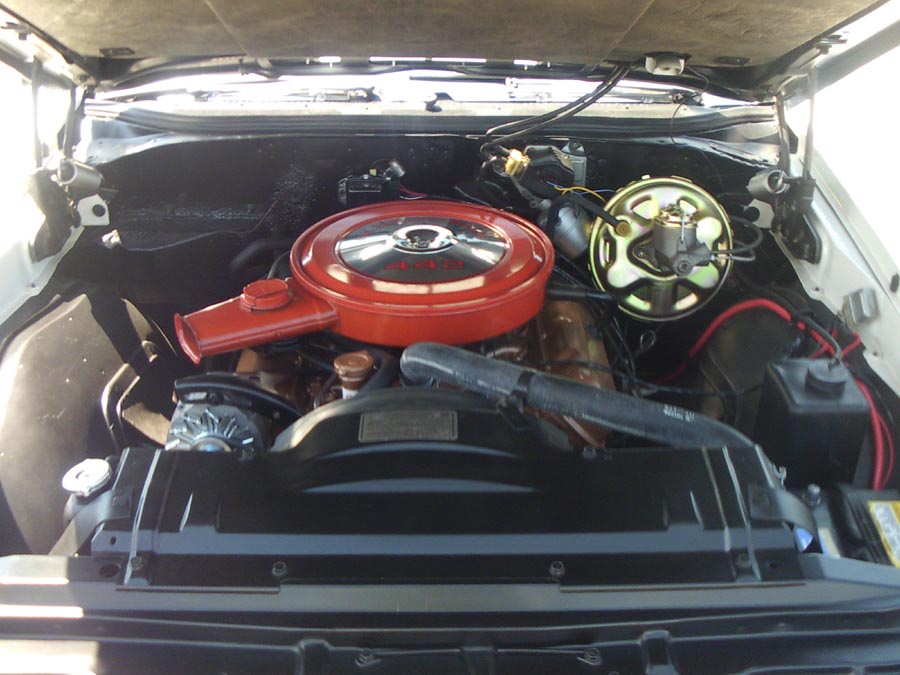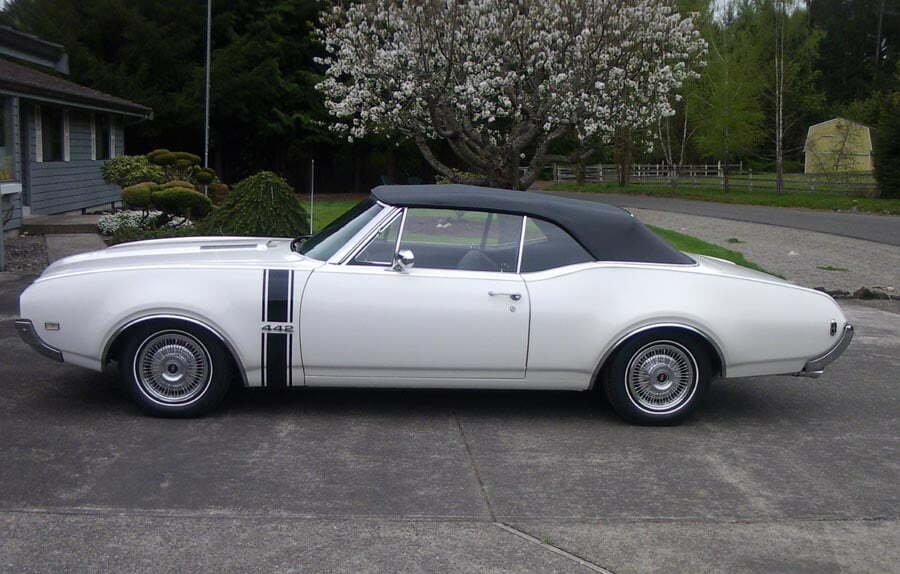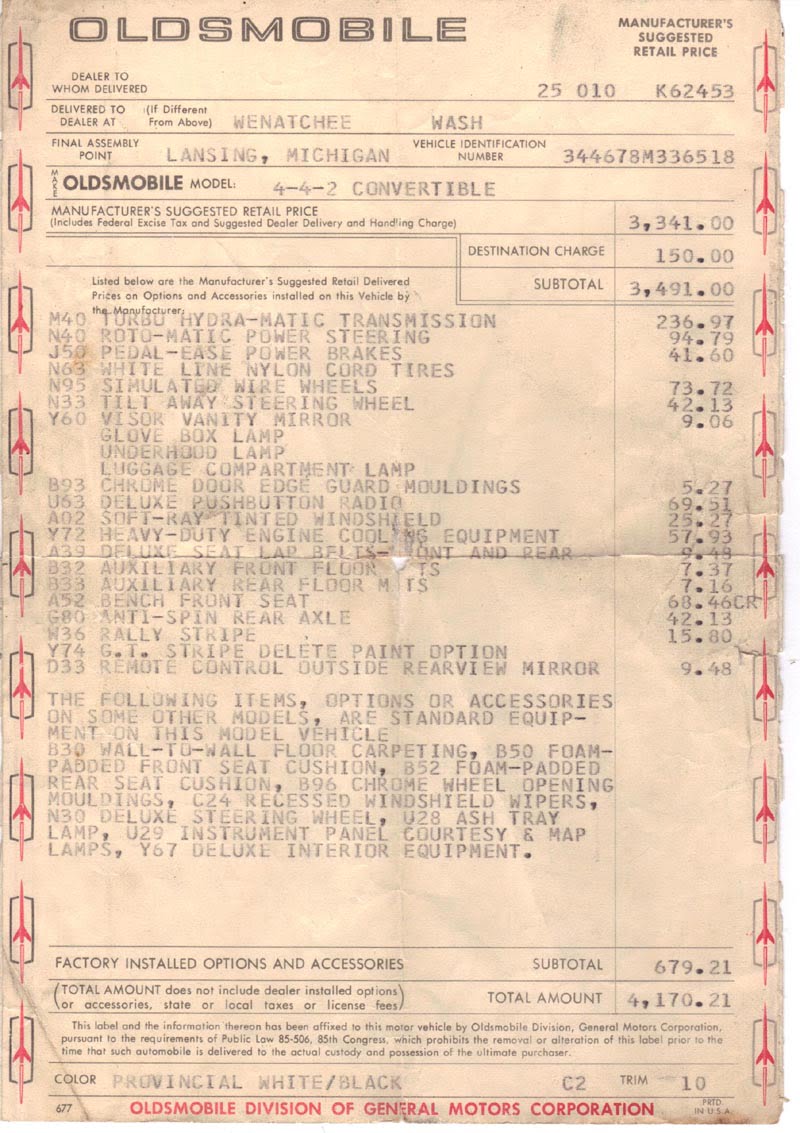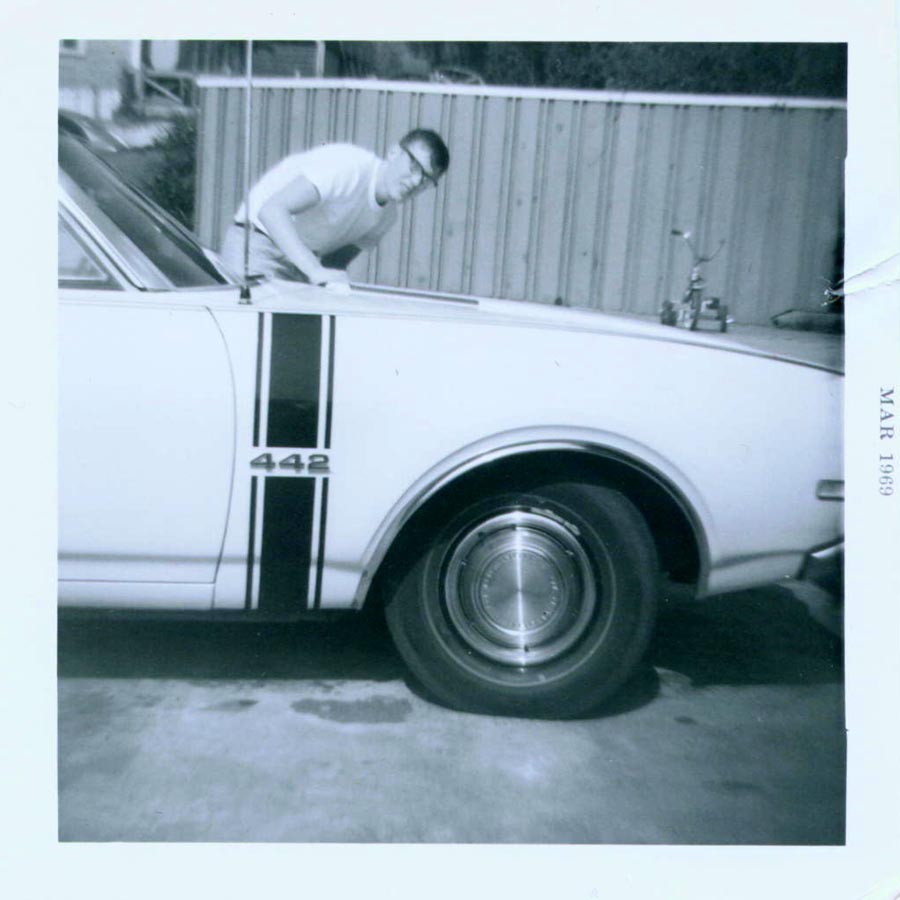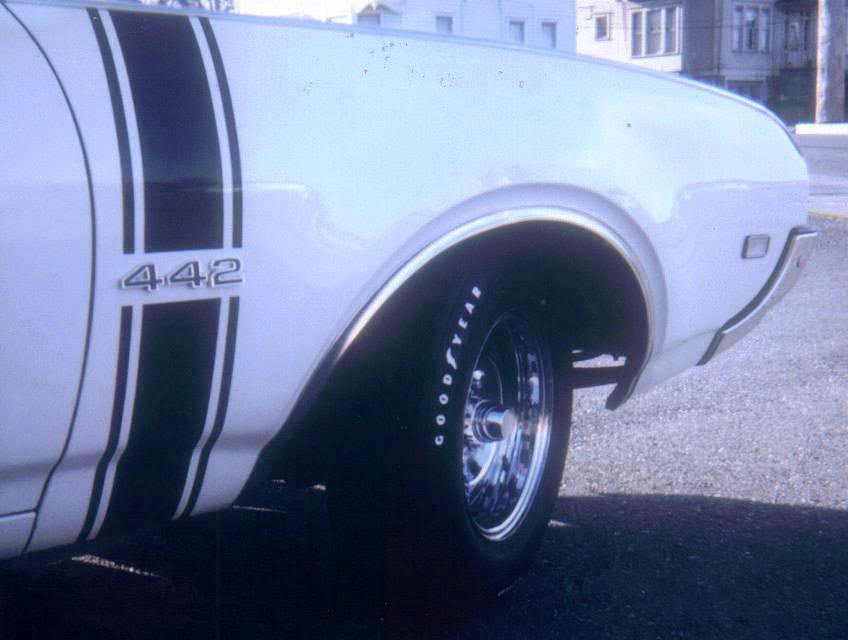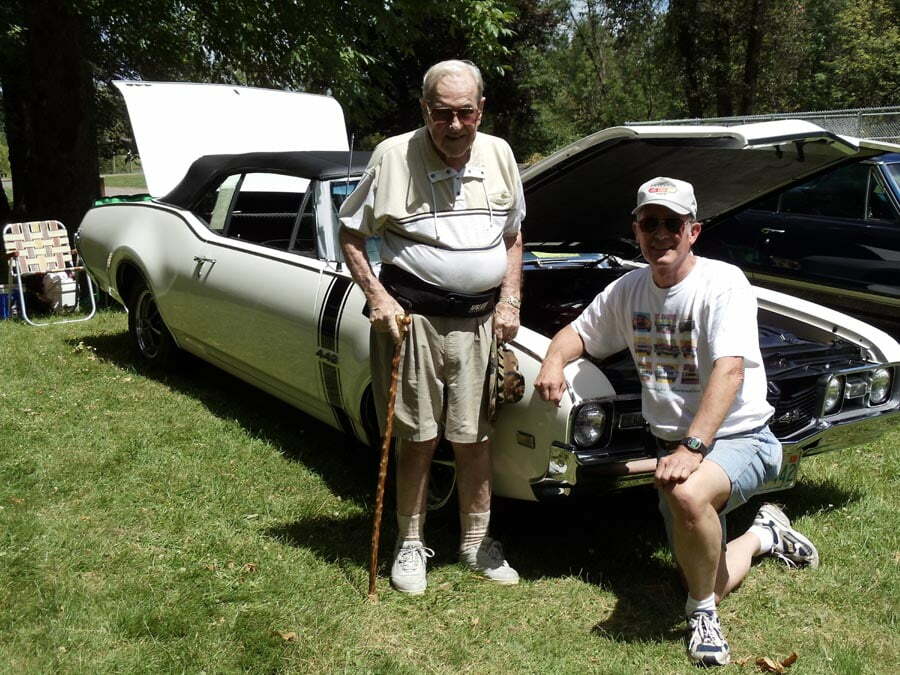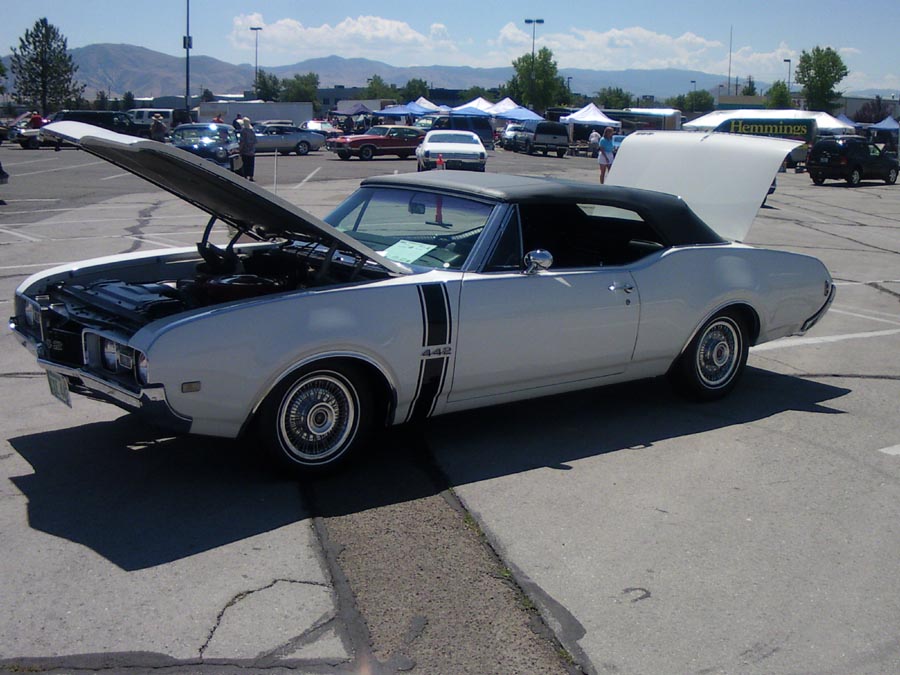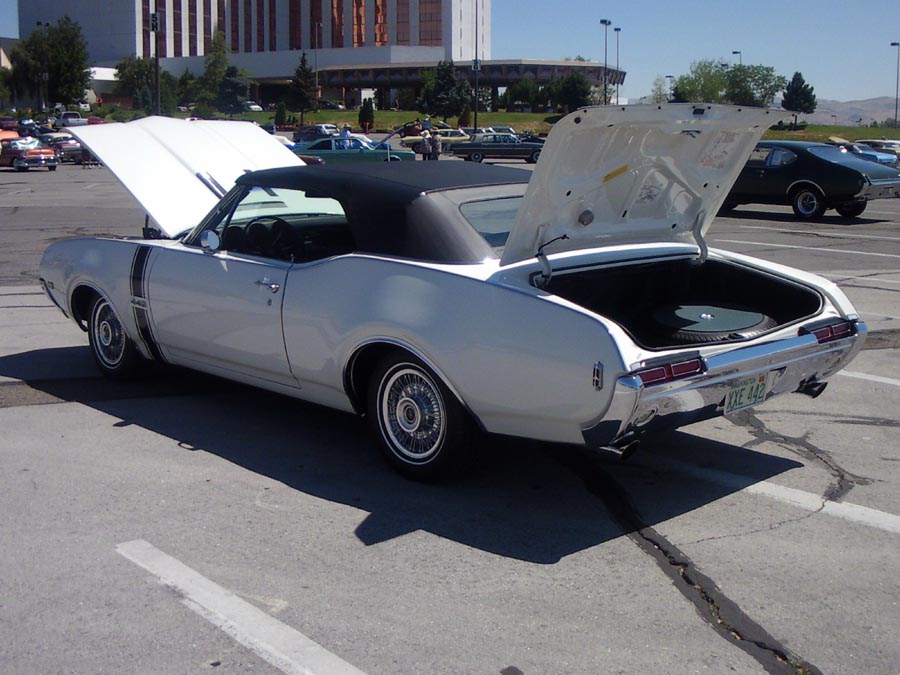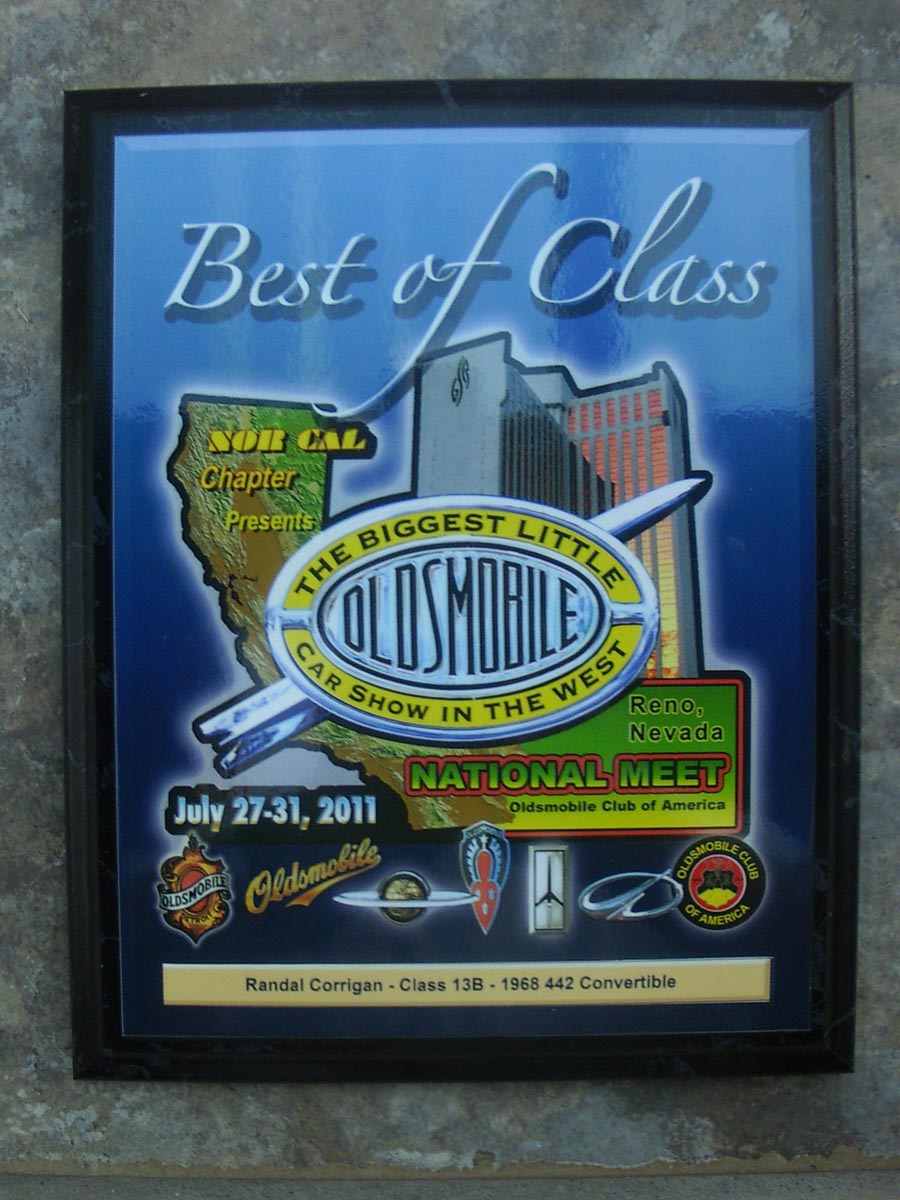Randy Corrigan’s Car Has Stayed in the Family for 44 Years!
By Randy Corrigan and Society Staff – reprint with permission only
My 4-4-2 was built in the first week of April 1968 at the Lansing plant The window sticker says it was shipped to Wenatchee, WA (see attached window sticker), to be driven by a Zone 25 manager in eastern Washington, but the dealer who sold the car to my dad a year later told me that this car was instead re-directed to Portland, OR, to be driven by a manager in the Zone 25 office.
Zone manager cars were referred to as “brass hat” cars in that day and age. A “brass hat” was titled and licensed under the ownership of the Oldsmobile Division of General Motors and this car was titled and licensed as such in Oregon on April 16, 1968. Once a “brass hat” had been driven for about 3 months or 3000 miles, it was turned over to a dealership to sell. Dealers loved “brass hat” cars because they came with a marked down price. Both the dealer and the buyer of a “brass hat” car could make out pretty good when the car was purchased.
In mid-July 1968, my 4-4-2 went to Murphy Motors in Coos Bay, OR. It stayed at that dealership for over 8 months. When I met with the owner/president of Murphy Motors, Mr. Paul Murphy (yes, he is still alive and quite well at 76 years old!), he immediately recalled the car. When I asked him why the car stayed at his dealership for so long, he told me that his wife liked the car so much that she used it as a family car for most of that 8 month period. Even Mr. Murphy’s daughter remembered the car (she was 4 years old in 1968) because of the stripes on the fenders.
Murphy Motors would have two sales in the spring of each year. In March, they would have a convertible sale and, in May, they would have a station wagon sale. In March 1969, Mr. Murphy told me that my ’68 4-4-2 was his “lead” car for his convertible sale that year. And, according to the paperwork I got from the State of Oregon Department of Motor Vehicles, Murphy Motors sold the 4-4-2 to my parents on March 28, 1969. I recall that my parents traded in their 1967 Cougar and added $925 to close the deal. The 4-4-2 originally had white line tires and wire wheel covers but my parents didn’t want those tires or wheel covers. Instead, my parents wanted their new red line tires off of the Cougar and the plan was to eventually put on some chrome reverse wheels.
Murphy Motors changed out the tires but they wouldn’t let the car off the lot without any hubcaps so they installed some PO1 wheel covers. The very first picture taken after my parents bought the car was a black and white photo on March 29, 1968, (which is included at right). That’s me, at 18 years old, giving our “new” 4-4-2, with red line tires and PO1 wheel covers, a wax job.
Although the car was now a year old, my parents were its first private owners. As such, they did not get a protect-o-plate with the car since it was considered “used” but, as a “brass hat”, it still came with a new car 12,000 mile warranty.
In just a couple of months, my parents had their chrome reverse wheels on the car. Tires were another story. Having two teenage sons with drivers’ licenses, the tires seemed to wear out rather quickly. My parents soon went to blackwall tires which I liked just as well. My brother and I would buy tire paint pencils and give the car a white-raised letter look. They looked real good when freshly painted but the white paint would turn yellow in just a couple of weeks. Needless to say, keeping that white-raised-letter look was labor-intensive.
My parents kept the 4-4-2 until about 1977, when they gave it to my sister. That process came with strings attached, however. The deal was that, if my sister ever wanted to get rid of the 4-4-2, my parents had first option to get it back.
In 1980, my sister took the car apart with the intention of restoring it, but tit never happened. The car sat, body on a rolling frame, engine rebuilt on an engine stand, parts in boxes and transmission, fenders and core support assembly, in the basement of her house for 23 years.As it became apparent that my sister wasn’t going to do anything with the 4-4-2, she gave it back to my parents in 2003. I got the job of retrieving it and all of the partsThe 4-4-2 sat in my shop for two years and then, in 2005, restoration began in earnest.
For the restoration, I wanted all the mechanicals to be as factory-correct as possible. I had to hunt down a lot of parts, including a carburetor, alternator, coil, voltage regulator, radiator, and starter. It took awhile but all the parts I got were not only correct part number-wise, the date codes on all the parts complemented the build date of the car.
I did add a few parts that did not originally come with the 4-4-2 but I saved all the original parts so, if need be, the car could be changed back to “window sticker correct” with little effort. Those changes included factory gauges (in place of the idiot lights), a factory “speed sentinel” speedometer (in place of the standard speedometer), a factory tic-toc-tac (in place of a blank pod), and a factory AM-FM mono radio with a rear speaker (in place of the AM-with-front-speaker-only radio).
The engine, transmission, steering box, front/rear suspension, differential, and brake system were all rebuilt. The driver side quarter panel had to be completely replaced due to damage from an old accident. Rust had to be removed from the passenger quarter wheel opening and the bottom edge of the trunk lid. The fenders were in surprisingly good condition and didn’t have to be re-worked at all. The paint used was PPG with a clear coat finish. Restoration was completed in 2007, at which point my parents gave the 4-4-2 to me.
I initially went with SSI wheels and red-line tires because I like that look much better than what the window sticker calls for. However, when I decided to take the 4-4-2 to the July 2011 Olds Nationals in Reno, I wanted the 4-4-2 to appear outwardly as the window sticker says. So, I bought some white-line tires (I already had the factory drum brake steel wheels and wire wheel covers) and put them on the car.
At the Nationals, my 4-4-2 earned “Best of Class” for 68-69 4-4-2 convertibles (Class 13b). I understand that is quite an accomplishment for a first time entrant in an Olds National meet. Needless to say, that made me pretty happy.
This 4-4-2 does have a couple of unusual features. First and foremost is the bench seat. 4-4-2s came standard with bucket seats and the bench seat had to be “special-ordered”, so to speak. It came with a credit of $68.46 (see the picture at rright). I recall seeing ads in Hemmings Motor News in the mid- to late-80s saying that only 201 4-4-2 convertibles were made with a bench seat in model year 1968. Of course, there is no way to know today if that is valid or not, but I do know that I have seen only one other 1968 4-4-2 convertible with a bench seat to date. Another somewhat unusual feature is the white-line tires and wire wheel covers.
Most 4-4-2s came with the standard red line tires. I recall back in the time that hardly anyone wanted anything to do with factory specialty wheels, such as the Super Stock wheel, as most people I knew would immediately put after-market wheels on their cars, such as Cragars, Keystones, and so forth. New car buyers would just get the standard steel wheel with poverty hub caps and then buy their after-market favorite “shoes”. I have the white line tires and wire wheel covers on the 4-4-2 now, but I kept the red line tires and SSI wheels because they make the car look more like a 4-4-2 should appear.
I’m looking forward to correcting the discrepancies noted on my judging sheet, plus making a few more improvements to the car in preparation for its next national meet, whenever that might be. I am fortunate and most grateful to have a such a neat car, and a car that has all but its first year in my family, parked in my garage!
68-olds-Image-3-1
Top up or dawn, this is one good-looking car. This is the “as delivered” look, with the wire wheel covers and white-line tires.
68-olds-Image-7-1
Father and Son 442. The original owner and the current owner – it never left the family!
68-olds-Image-9-1
This is when I met with the owner/president of Murphy Motors, Mr. Paul Murphy who had the “brass hat” car for over 8 months.



